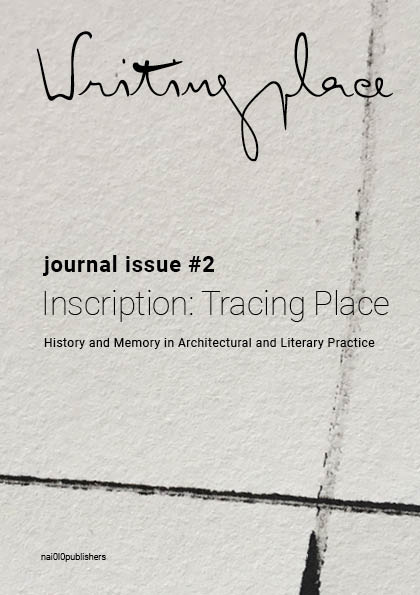Melancholy Inscriptions
Memory, Place, and Temporality in W.G. Sebald’s Austerlitz
DOI:
https://doi.org/10.7480/writingplace.2.2637Keywords:
melancholy, Sebald, Temporality, topoanalysis, cryptAbstract
Melancholy is a key term in W.G. Sebald’s critique of the involuntary lack of mourning in Germany during the latter half of the twentieth century. This essay explores how the collective repression that Sebald identifies on a national scale is refracted in his novel Austerlitzthrough the melancholy personal history of the eponymous protagonist. Austerlitz is haunted by cryptic gaps and absences that surround the spaces of his everyday life; his unfinished history of architecture and capitalism acts as a screen on which he compulsively projects his typological interests but also as a screen that separates him from his past. For Freud, melancholia was caused by an inability to work through the effectsof trauma and loss. Scrutinizing Freud’s account of melancholia, psychoanalysts Abraham and Torok are struck by the recurrent image of an open wound that the melancholic attempts to encrypt. These melancholic encryptions originate when the unprocessed loss becomes entombed within the self, forming a crypt, a pleated fold or enclave that encapsulates the trauma. To decipher the crypt, Abraham and Torok devise a cryptonymy that combines psychoanalytic theory, literary criticism and topoanalysis. Through cryptonymy they discover that crypts leak: secrets are secreted.
Austerlitz’s decisive passage back into his own transnational history as a child refugee from the Kindertransport occurs at Liverpool Street Station, a place he is compelled to revisit and where he experiences spectral manifestations of the co-existence of the past and the present. The recognition that Austerlitz experiences at Liverpool Street Station can be productively contrasted with his reaction to another significant London landmark in the novel, the Royal Observatory in Greenwich. Standing on the prime meridian that divides the globe into eastern and western hemispheres, Austerlitz explains that time was by far the most artificial of all our inventions. Rather than a linear chronology, Austerlitz posits a multi-temporal perspective from which past, present and future events co-exist in the same place. While noting how Austerlitz’s ideas intersect with other philosophical and political critiques of the limited view of history that arise from an exclusively linear progression, this essay will also pursue the more immediate example of the narrative of Austerlitz itself. For long sections of the novel the unnamed narrator repeats the digressive reminiscences relayed to him by Austerlitz, recollections frequently studded with other narratives and narrators. Through this structural framework, Sebald intimates the dislocation and fragmentation of Austerlitz’s character but also establishes a set of temporal conditions in which melancholic repetition undermines the chronological progression of history. The site-specific return of the repressed in Austerlitzreveals how the crypt of melancholy leaks: linear time collapses through the personal and collective inscription of memories and histories associated with particular places.
References
Abraham. N. and Maria Torok, ‘Mourning or Melancholia: Introjection versus Incorporation’, in: Nicolas Rand (ed. and trans.), The Shell and the Kernel: Renewals of Psychoanalysis (Chicago and London, 1994)
Abraham, N. and Maria Torok, The Wolf Man’s Magic Word: A Cryptonymy, trans. by Nicholas Rand (Minneapolis, 1986)
Benjamin,W. ‘On the Concept of History’, in: Howard Eiland and Michael W. Jennings (eds. and trans.), Selected Writings: Volume 4 1938-1940 (Cambridge, MA and London, 2006)
Bowring, J. A Field Guide to Melancholy (Harpenden, 2008)
Freud, S. ‘Mourning and Melancholia’, in: James Strachey (ed. and trans.), The Standard Edition of the Complete Psychological Works of Sigmund Freud (London, 1974), Vol. 14, 237-60.
Sebald, W.G. Austerlitz, trans. by Anthea Bell (London, 2001)
Sebald, W.G. and Gordon Turner, ‘Introduction and Transcript of an interview given by Max Sebald’, in: Scott Denham and Mark McCulloh (eds.), W.G. Sebald, History – Memory – Truth (Berlin, 2006)
Sebald, W.G. On the Natural History of Destruction, trans. by Anthea Bell (London, 2003)
Schwab, G. ‘Writing against Memory and Forgetting’, Literature and Medicine, 25 (2006)
Serres, M. with Bruno Latour, Conversations on Science, Culture, and Time, trans. by Roxanne Lapidus (Ann Arbor, 1995)



